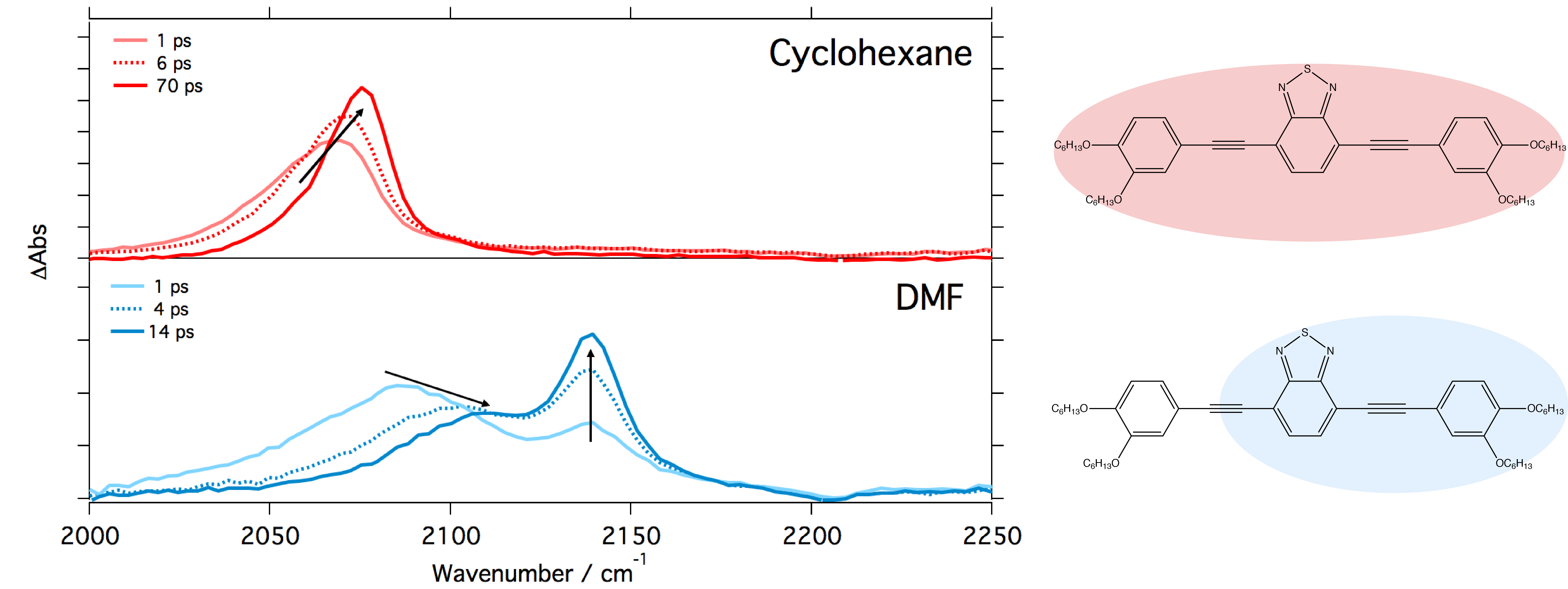Investigating Excited-State Symmetry Breaking in Quadrupolar Compounds using Time-resolved Infrared spectroscopy.
Quadrupolar molecules, comprising of D-π-A-π-D or A-π-D-π-A motifs, are mostly studied for to their strong two-photon absorption cross section. These compounds show almost no solvatochromism in their electronic absorption spectra but fluorescence reveals that the emitting state is greatly affected by the solvent. This phenomenon has been ascribed to excited-state symmetry breaking, i.e. to the unbalanced distribution of the excitation over the molecule due to fluctuations of the solvent or of the geometry of the molecule [1]. Whereas time-resolved electronic spectroscopic techniques do not provide much insight into the dynamics of the symmetry breaking of these compounds, time-resolved infrared spectroscopy constitutes an excellent tool to study this phenomenom. We are currently studying different quadrupolar compounds consisting of alkoxybenzenes as weakly donating groups and either benzothiadiazoles or anthracene moieties as central acceptors [2]. The D and A moieties are linked together with a carbon triple bond, which serves as an excellent IR active probe. We will discuss whether the solvation is the dominant factor determining the extent of symmetry breaking or whether conformational changes alone can induce symmetry breaking in these compounds.

[1] Bogdan Dereka, Arnulf Rosspeintner, Zhiquan Li, Robert Liska, and Eric Vauthey, J. Am. Chem.
Soc., 2016, 138, 4643-4649.
[2] Federica Ricci, Fausto Elisei, Paolo Foggi, Assunta Marrocchi, Anna Spalletti, and Benedetta Carlotti, J. Phys. Chem. C, 2016, 120, 23726-23739.